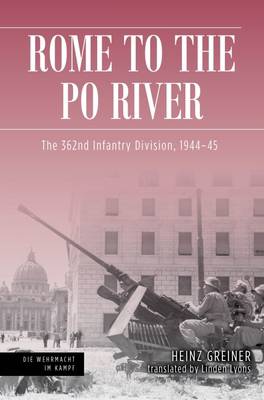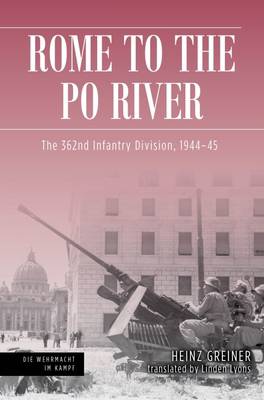
- Afhalen na 1 uur in een winkel met voorraad
- Gratis thuislevering in België vanaf € 30
- Ruim aanbod met 7 miljoen producten
- Afhalen na 1 uur in een winkel met voorraad
- Gratis thuislevering in België vanaf € 30
- Ruim aanbod met 7 miljoen producten
Zoeken
Omschrijving
"...this book shines when it comes to understanding the campaigns on a lower level than has normally shown us by authors." --A Wargamers Needful Things
In late 1943, 362. Infanterie-Division was formed around the remnants of 268. Infanterie-Division, which had been disbanded after high casualties on the Eastern Front. It fought at Anzio in early 1944, overrun when the Allied broke through the German lines in April. During its time at Anzio, the division was involved in the Benedicta massacre.
The unit was withdrawn to Rome. Facing the Allied advance, it suffered further losses and had to be rebuilt once more. Returning to the front, it then fought until late April 1945, when it surrendered.
This account focuses on the efforts of 362. Infanterie-Division to turn back the Allied forces from their advance north in late 1944 and early 1945. Its commander, Heinz Greiner led the division in a series of counterattacks against Allied forces outside Rome that slowed Allied progress.
While Greiner did not have access to the unit war diary while writing this account his experience as commander of 362. Infanterie-Division throughout this period means that it offers a unique insight into the battle from the German perspective as well as a thorough account of the reestablishment, training and combat performance of a German division.
In late 1943, 362. Infanterie-Division was formed around the remnants of 268. Infanterie-Division, which had been disbanded after high casualties on the Eastern Front. It fought at Anzio in early 1944, overrun when the Allied broke through the German lines in April. During its time at Anzio, the division was involved in the Benedicta massacre.
The unit was withdrawn to Rome. Facing the Allied advance, it suffered further losses and had to be rebuilt once more. Returning to the front, it then fought until late April 1945, when it surrendered.
This account focuses on the efforts of 362. Infanterie-Division to turn back the Allied forces from their advance north in late 1944 and early 1945. Its commander, Heinz Greiner led the division in a series of counterattacks against Allied forces outside Rome that slowed Allied progress.
While Greiner did not have access to the unit war diary while writing this account his experience as commander of 362. Infanterie-Division throughout this period means that it offers a unique insight into the battle from the German perspective as well as a thorough account of the reestablishment, training and combat performance of a German division.
Specificaties
Betrokkenen
- Auteur(s):
- Vertaler(s):
- Uitgeverij:
Inhoud
- Aantal bladzijden:
- 200
- Taal:
- Engels
- Reeks:
Eigenschappen
- Productcode (EAN):
- 9781636242286
- Verschijningsdatum:
- 22/02/2023
- Uitvoering:
- Hardcover
- Formaat:
- Genaaid
- Afmetingen:
- 152 mm x 229 mm
- Gewicht:
- 462 g

Alleen bij Standaard Boekhandel
+ 111 punten op je klantenkaart van Standaard Boekhandel
Beoordelingen
We publiceren alleen reviews die voldoen aan de voorwaarden voor reviews. Bekijk onze voorwaarden voor reviews.








